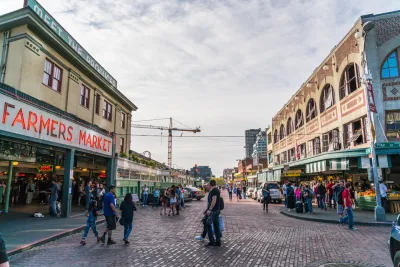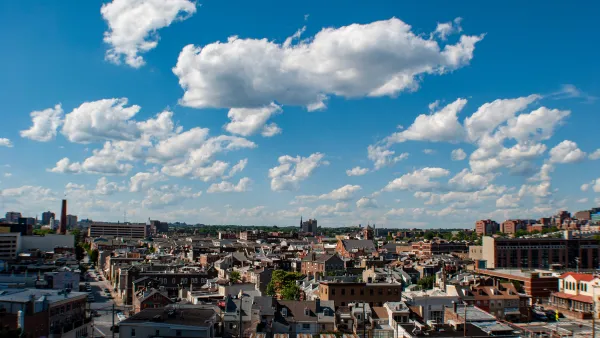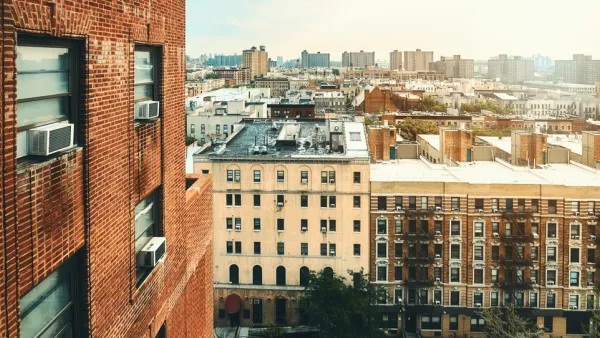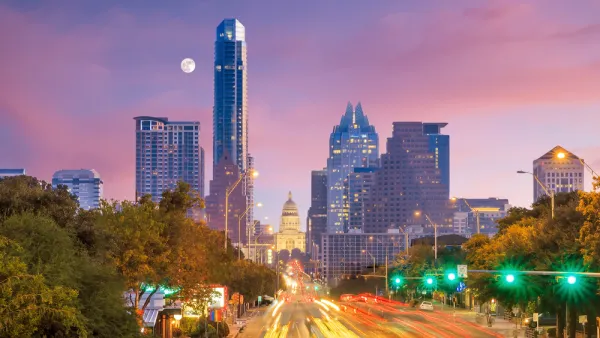The increased demand for walkable urban spaces could make them more and more exclusionary if cities don’t pursue policies to limit displacement and boost affordability.

As more people recognize and seek out the benefits of compact, walkable, communities, the desirability of these areas and the consequent rising housing costs threaten to put them out of reach for many American households without concerted efforts on the part of policymakers to preserve affordable housing, according to a report from Smart Growth America. Maria Rachal outlines the report’s findings for Smart Cities Dive.
While early pandemic pundits predicted the ‘death’ of urban areas, recent trends show that people—perhaps more than ever—value the benefits of compact development and easily accessible amenities and services. But “Demand drives up costs and can reduce low- and moderate-income households’ opportunity to live in highly walkable areas,” the report warns.
“The organizations that produced the report stated that 19.1% of the total U.S. real GDP and 6.8% of the nation’s population are in walkable urban places that cover 1.2% of the total land mass of the top 35 metro areas.” Yet many localities prevent dense development through their zoning codes. “To spur walkability and equitable access to walkable areas, cities can advance zoning reform, foster non-car transportation options, preserve and invest in affordable housing, and plan for walkable neighborhoods to be resilient to climate impacts, the report states.”
FULL STORY: Walkable urban areas are popular but have an affordability problem: report

National Parks Layoffs Will Cause Communities to Lose Billions
Thousands of essential park workers were laid off this week, just before the busy spring break season.

Retro-silient?: America’s First “Eco-burb,” The Woodlands Turns 50
A master-planned community north of Houston offers lessons on green infrastructure and resilient design, but falls short of its founder’s lofty affordability and walkability goals.

Delivering for America Plan Will Downgrade Mail Service in at Least 49.5 Percent of Zip Codes
Republican and Democrat lawmakers criticize the plan for its disproportionate negative impact on rural communities.

Test News Post 1
This is a summary

Test News Headline 46
Test for the image on the front page.

Balancing Bombs and Butterflies: How the National Guard Protects a Rare Species
The National Guard at Fort Indiantown Gap uses GIS technology and land management strategies to balance military training with conservation efforts, ensuring the survival of the rare eastern regal fritillary butterfly.
Urban Design for Planners 1: Software Tools
This six-course series explores essential urban design concepts using open source software and equips planners with the tools they need to participate fully in the urban design process.
Planning for Universal Design
Learn the tools for implementing Universal Design in planning regulations.
EMC Planning Group, Inc.
Planetizen
Planetizen
Mpact (formerly Rail~Volution)
Great Falls Development Authority, Inc.
HUDs Office of Policy Development and Research
NYU Wagner Graduate School of Public Service





























